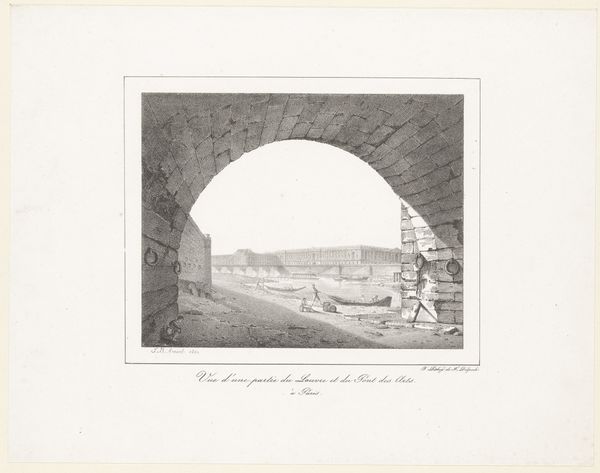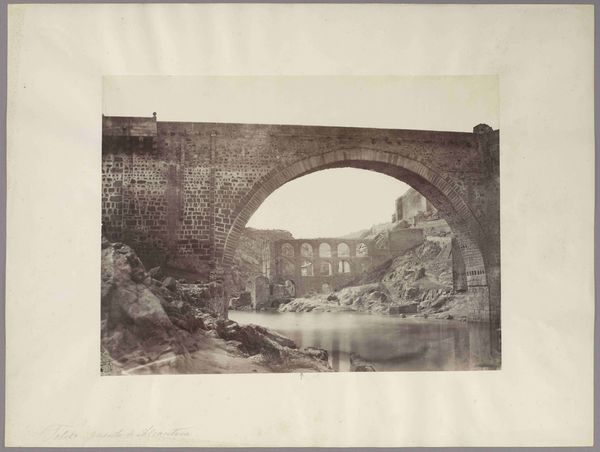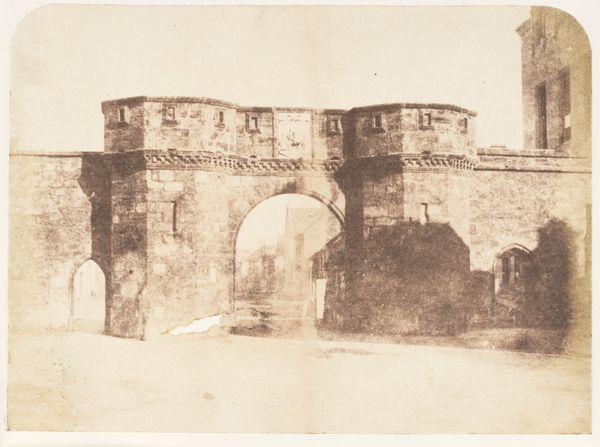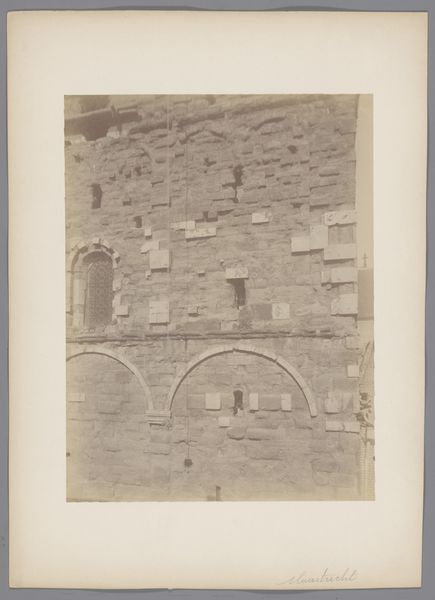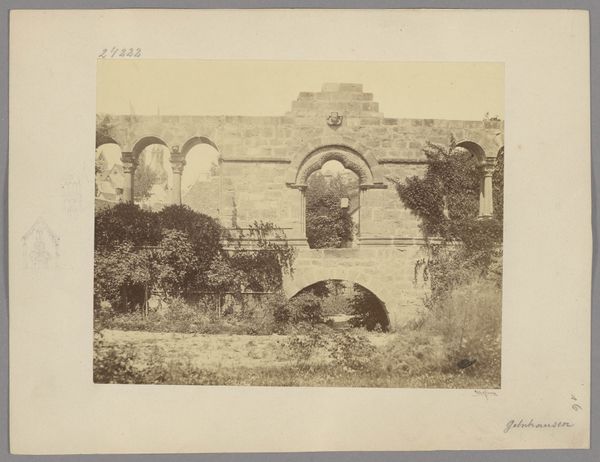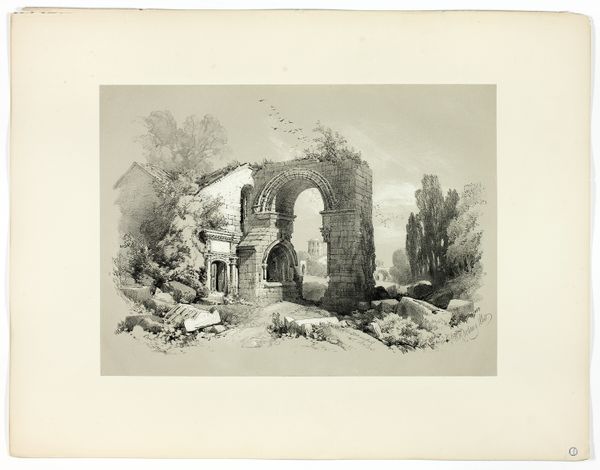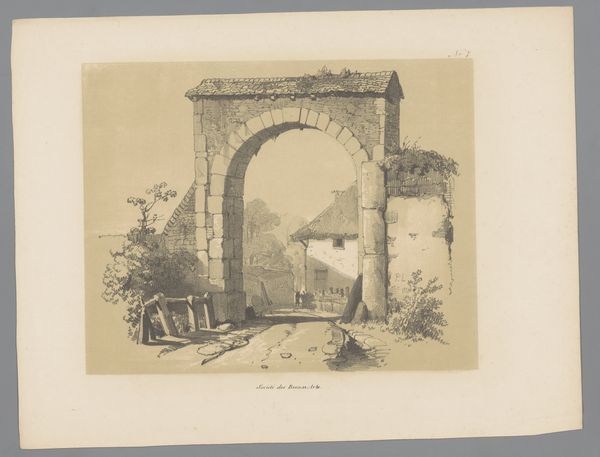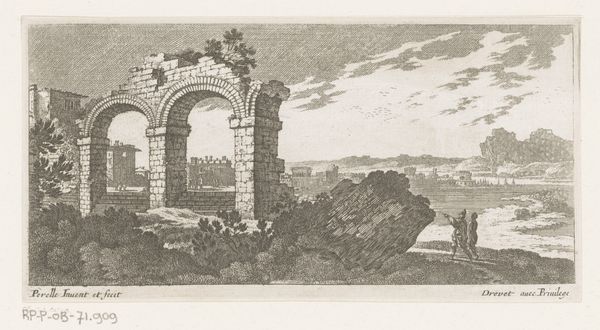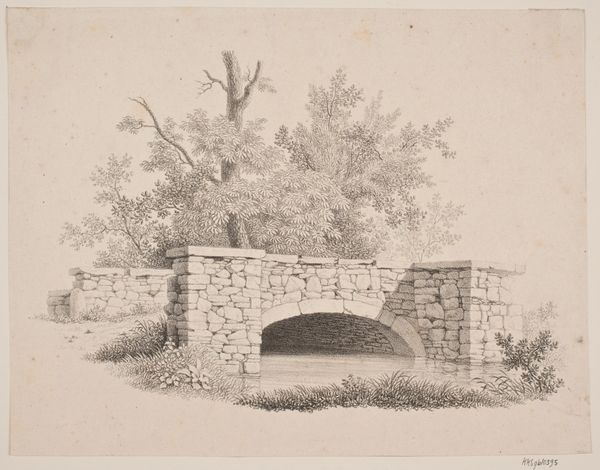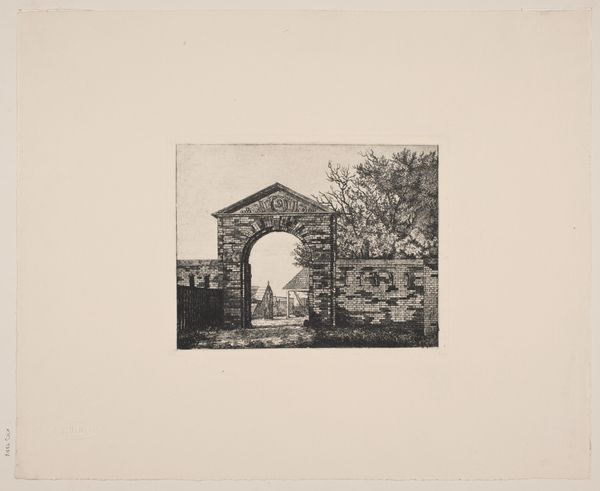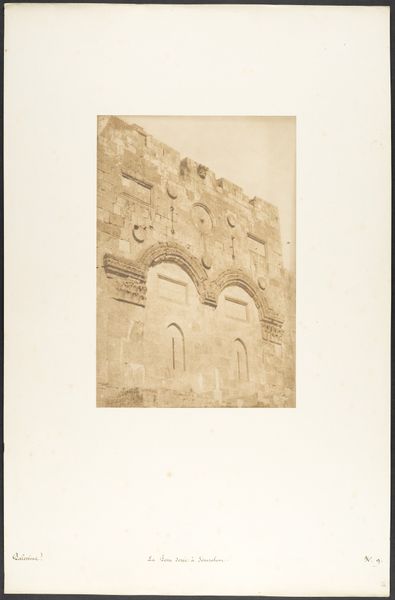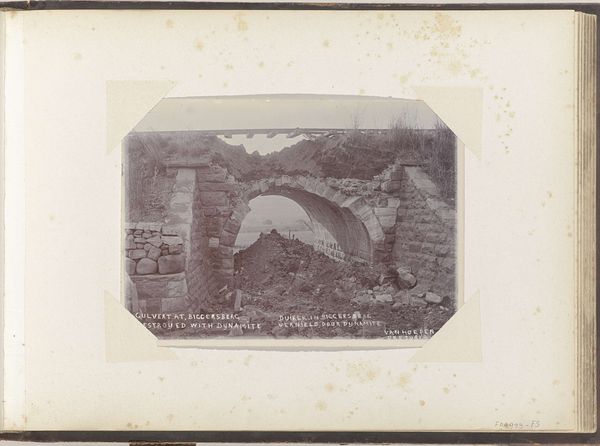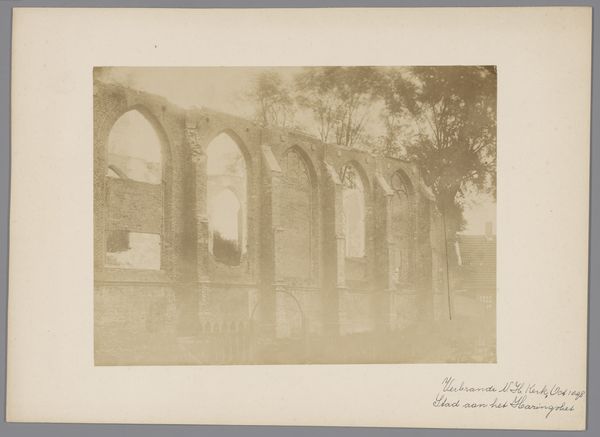
drawing, paper, watercolor, ink
#
drawing
#
neoclacissism
#
landscape
#
paper
#
watercolor
#
ink
#
classicism
#
watercolour illustration
#
realism
Dimensions: height 302 mm, width 208 mm, height 414 mm, width 289 mm
Copyright: Rijks Museum: Open Domain
Cesare Massimiliano Gini made this drawing of a bridge with pen and brown ink in the late 18th or early 19th century. The depiction of the bridge is interesting because it's not presented as a functional object, but more as a fragment of history that's already starting to crumble and blend in with nature. We see the stones that form the arch of the bridge, and plantlife growing out of its structure. This reflects the growing interest among European artists at this time in the classical past and its ruins. The fact that this drawing was made in Italy is significant, because Italy was full of such monuments and classical ruins. As scholars have shown, the artistic academies of Italy provided artists with formal training in the depiction of these classical structures, and there was also a thriving market for prints and drawings of Roman ruins among tourists visiting Italy on the so-called Grand Tour. Drawings like this one were often made for the art market, but as historians we can also look at them as documents of cultural and institutional history.
Comments
No comments
Be the first to comment and join the conversation on the ultimate creative platform.
